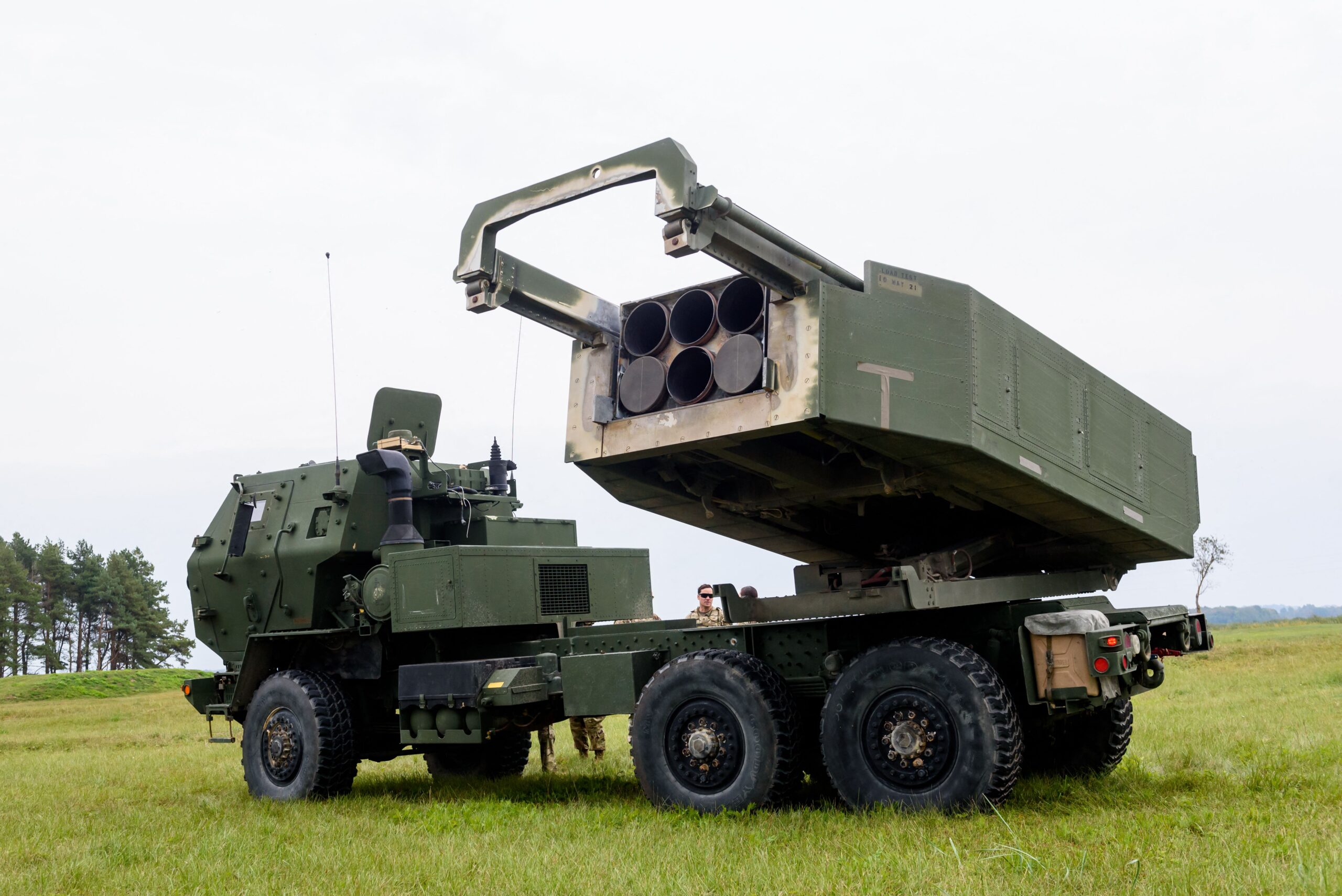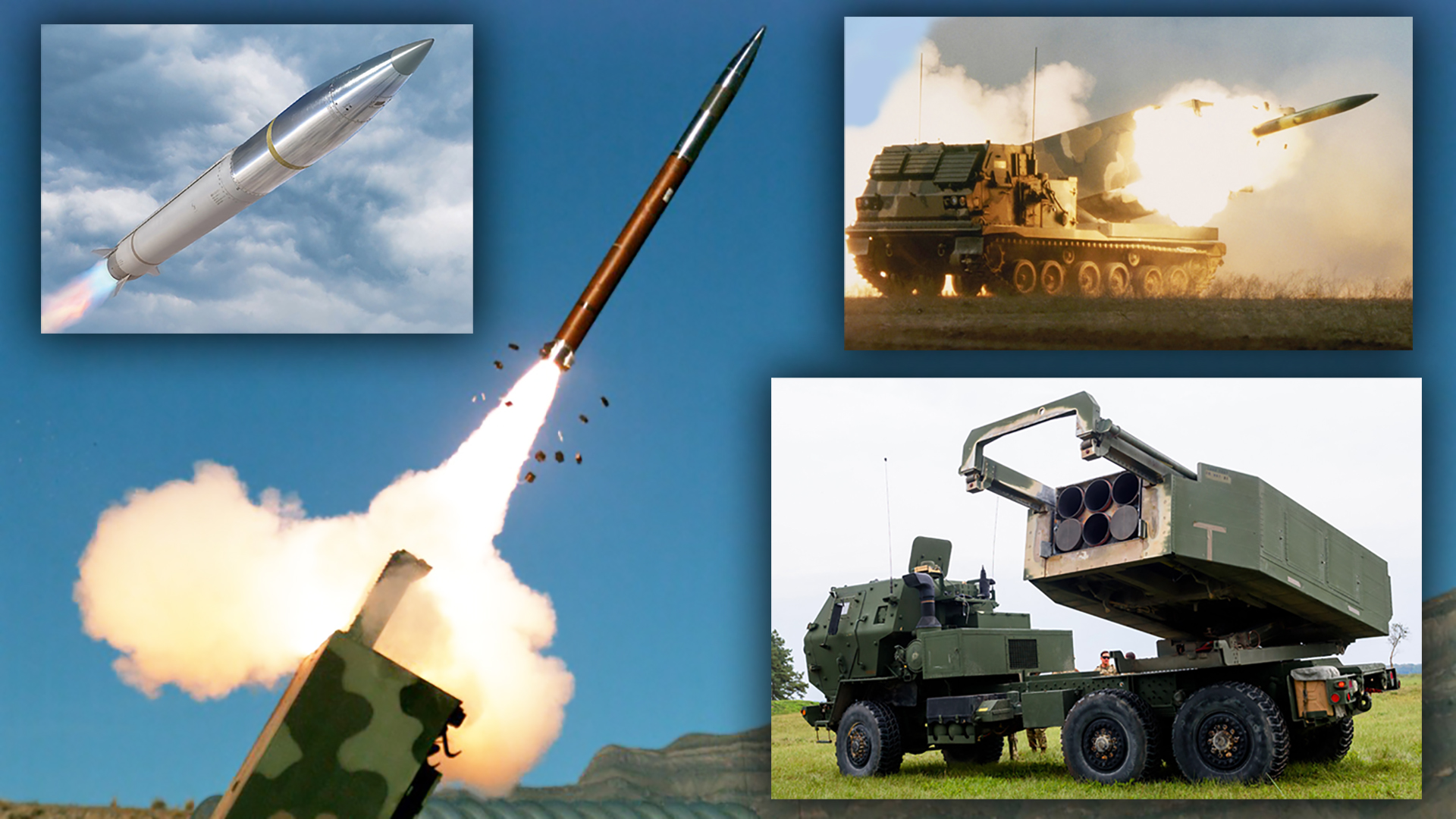Lockheed Martin’s Extended-Range Guided Multiple Launch Rocket System, or ER GMLRS, has completed its first systems qualification test. Based on the original GMLRS that has been made famous by its game-changing employment in Ukraine, the new ER GMLRS is designed to more than double the 43-mile distance that its predecessor can reach out to. Now, this recent test has confirmed that ER GMLRS is officially in the final phases of its development.
The test was held Thursday, October 6 at White Sands Missile Range in New Mexico where the ER GMLRS round was fired from a High Mobility Artillery Rocket System (HIMARS), which Lockheed Martin also builds, to demonstrate its ability to also perform at shorter ranges. In a press release shared the following Monday, Lockheed Martin claimed that the ER GMLRS met all success criteria in the short-range test flight scenario, which means that the rocket traveled approximately 36 miles (59 km) to the designated target area.

“Our next-generation GMLRS provides versatility for commanders, offering a choice of munitions at longer distances with the same reliability and precision the system is known for,” said Jay Price, vice president of Precision Fires at Lockheed Martin Missiles and Fire Control. “This success advances the ER GMLRS closer to production as we complete the final phase of the development program.”
Even though the test was held over a much shorter range than what the ER GMLRS is being developed to achieve, Lockheed Martin reported that the Thursday trial was nonetheless beneficial in confirming the missile’s flight trajectory, range, and accuracy from the points of launch to impact. The test also evaluated the ER GMLRS warhead’s lethality, the system’s ability to integrate with its HIMARS launcher counterpart, as well as the missile’s general performance during a short-range strike.

Lockheed Martin went on to add that the pod that contains the ready-to-fire rounds even underwent Stockpile to Target Sequence (STS) testing prior to launch, which is described as an effort to simulate the cumulative effects that the ER GMLRS could face in the field between factory and launch. Essentially, STS testing is intended to help the manufacturer better understand the durability of the missile and launch pod container while removing the weapon from storage, preparing it for launch, transporting it, and ultimately firing it. The GMLRS rockets need to be able to take quite a beating when installed on their off-road capable HIMARS or M270 launchers.
While the new GMLRS variant’s extended range doesn’t appear to have been the main focus of Lockheed Martin’s most recent test, it’s certainly the new offering’s defining factor overall as it can reach out to approximately 93 miles (150 km) in all weather conditions. For perspective, the ER GMLRS’ two predecessors, the GMLRS Unitary and the GMLRS Alternative Warhead (AW), both offer a range of just over 43 miles (70 km).

The big boost in range means a single launcher can engage targets over a much larger area at any given time. When firing standard-range GMLRS rockets, a HIMARS can cover targets within an area of about 5,800 square miles in any direction. However, when equipped with the new ER GMLRS, a launcher could instead potentially hit targets over approximately 27,000 square miles or roughly five times what its predecessor could achieve (note that these figures include areas below its minimum firing distance). This massively increases the utility of each launcher as well as allows for targets much farther away to be engaged.

The U.S. Army first began testing longer-range GMLRS concepts in 2018, and the initiative was led by the Army’s Aviation and Missile Research, Development, and Engineering Center (AMRDEC). The effort was dubbed the Tail Controlled Guided Multiple Launch Rocket System (TC-GMLRS) project and sought to improve the existing GMLRS rocket design by relocating its flight control section from the nose to the rocket’s tail, as the Army believed that its previous location otherwise limited the weapon’s potential maximum range.
By moving the fins to the tail, the rocket’s aerodynamics were streamlined. This could keep it flying longer and for farther distances after launch. A new GPS/INS guidance package was also required to address the fins’ new positions, which the current iteration of the ER GMLRS still uses.


Lockheed Martin has confirmed to The War Zone that the ER GMLRS also features a new motor that enables it to achieve its extended range, though the company did not provide any additional details in that regard. A fact sheet published by the company does, however, reveal a plan to update the missile’s launch pod design with the ability to accommodate future variants up to 10 inches in diameter. The pods’ compatibility with legacy GMLRS will not be affected and both the ER GMLRS and their new pods will be compatible with HIMARS and MLRS M270 launchers. The brochure also notes that the ER GMLRS’ warhead will not deviate from the earlier GMLRS’ existing unitary and alternative warhead options for fixed point targets and fixed area targets respectively.
It was unfortunately the ER GMLRS’ newly relocated fins that prevented the missile from achieving a successful first test flight in November 2020. The demonstration was the first of four that would make up the program’s engineering development test phase, and the company revealed that a “technical issue” with a singular fin caused the missile to experience an anomaly after launch.

Four months after the failed test, Lockheed Martin attempted a second one, and in a statement to Defense News explained that they had used lessons learned from the failed inaugural trial to incorporate “minor enhancements to mitigate recurrence” but did not go into further detail about these modifications. The company claims that the test was a success and released an announcement explaining that the ER GMLRS performed as intended in a near 50-mile (80-km) flight demonstration. Two additional tests were conducted through May of last year with the final evaluation having demonstrated the rocket’s ability to engage a target at a distance of nearly 84 miles (135 km).
Now, with the ultimate goal still being achieving the 93-mile (150-km) range that Lockheed Martin is setting for ER GMLRS, the missile has about 15 miles to go. The next phases of the program will include a series of additional system qualification test flights, like the one conducted this week, as well as operational test flights. Lockheed Martin hasn’t commented on the specifics of the remaining test schedule.

Depending on the success of these final trials, Defense News also reported that ER GMLRS is set to be cut into production sometime in Fiscal Year 2023 as part of Lockheed Martin’s GMLRS contract with the Army. The company has said that the ER GMLRS missiles will be produced at its facility in Camden, Arkansas, which over the years has manufactured more than 60,000 GMLRS rounds.
There is an increasingly growing need to boost the production of such systems as the demand for both the rockets themselves and HIMARS launchers grows. The supply versus demand conundrum really started to come to light this summer when the United States began dipping into its GMLRS stockpiles to ramp up rocket deliveries to Ukraine as the country received consecutive shipments of HIMARS. Ukraine’s burn rate and the demand for the capability abroad understandably raised concerns about whether the U.S. military itself would have enough GMLRS to use in its own potential future conflict with, for example, China. You can read all about this issue in this past War Zone feature.

Once handed over to the Army specifically, the ER GMLRS would present the service with a big leap in flexibility. This is especially true when paired with HIMARS as these wheeled vehicle-based launchers are highly mobile and air transportable, which would make ER GMLRS especially ideal for distributed and expeditionary operations.
There is also the possibility that these enhanced guided rockets could end up in Ukraine. GMLRS and HIMARS supplied through U.S. weapons deliveries have gained a cult following throughout the conflict because of their ability to provide what is virtually an on-demand precision strike capability against critical targets like Russian ammunition depots and logistics nodes.

However, none of the guided rocket deliveries that Ukraine has received since the start of the conflict, including GMLRS, can reach particularly deep into Russian-controlled territory, which is where an ER GMLRS could certainly be advantageous. Although, with the Army and Lockheed Martin still in the process of pushing the ER GMLRS to reach its ambitious 93-mile range, it may be a ways off until they would arrive on the Ukrainian battlefield. That is if the conflict is still ongoing at that time. Hopefully, it won’t be.
The War Zone reached out to Lockheed Martin for clarification on production numbers and delivery timelines but was deferred to the Army which has yet to respond to our inquiry. Either way, the introduction of ER GMLRS in Army arsenals is getting closer and we’ll provide an update with projected dates once we receive them.
Contact the author: Emma@thewarzone.com
